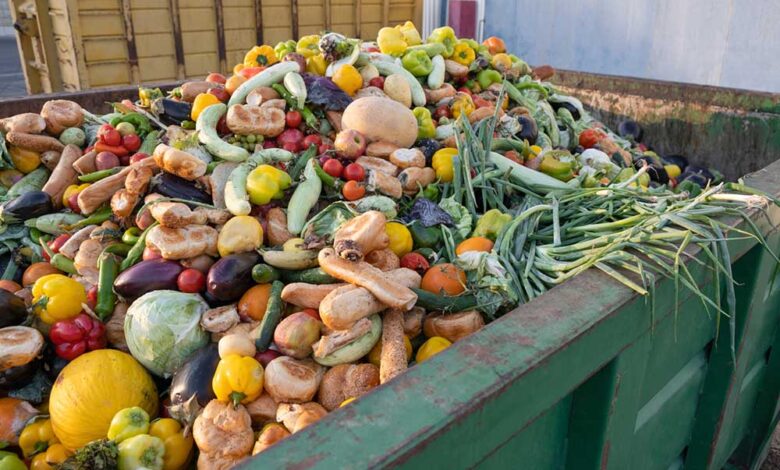Reducing Food Waste for a Sustainable Food Future

Latest data on food production released by the United Nations Food and Agriculture Organization (FAO) shows that in 2023 the worldwide production of primary crops reached 9.9 billion tonnes. This food production, which has increased by over 27 percent since 2010, is assessed to be adequate enough to feed the current global population of 8.2 billion people. And yet, more than 783 million people, representing 1 in 10 of the global population, go hungry every day. In Africa, this rate rises to 1 in 5 of the continent’s population.
The lack of access to adequate nutritious food impacts people everywhere, with over 2.8 billion people, or nearly 35 percent of the global population, being unable to afford a daily adequate, healthy diet. Moreover, the impact of food inadequacy is felt disproportionately—while in high-income countries only 6.3 percent of the population do not have access to a healthy diet, this figure rises to 71.5 percent of the population in low-income countries.
Sufficient food production and its uneven distribution underlines the dilemma of the global food system.
Conflicts, climate, crises, and economic pressures pose the greatest challenge to equitable availability and distribution of food, as well as to its accessibility and affordability. The multiple factors that lead to food insecurity, especially in low-income countries and conflict zones, are further exacerbated by the current level of food loss and waste in the global food system.
According to FAOSTAT—the comprehensive global food and agriculture data published by the FAO—around 14 percent of food produced around the world is lost after harvest, in the processing, storing, transporting and distribution process. An additional 19 percent of food available to consumers is then wasted in the retail and household stages. The total volume of edible food lost post-harvest or wasted in retail and households is estimated at 1.3 billion tons annually.
In addition, FAOSTAT figures show that 1.4 billion hectares of land, or nearly 28 percent of the world’s total agricultural area, is used annually to produce food that is eventually lost or wasted. In addition, around 38 percent of total energy consumption in the global food system is utilized to produce food that is either lost or wasted. Also, over 250 cubic kilometers of water—the equivalent of three times the volume of Lake Geneva in Switzerland—is used each year to produce food that is lost or wasted.
With agriculture accounting for 70 percent of the water used throughout the world, the water utilized to produce squandered food represents a major waste of the world’s growingly scarce freshwater and ground water resources. Wasted food along with land, water, energy, and labor waste pose a severe economic loss, with the World Bank estimating that food loss and waste costs the global economy around US$1 trillion annually.
Food loss and waste also accounts for 8 to 10 percent of the world’s greenhouse gas emissions (GHG). Carbon dioxide (CO2), the main constituent of GHGs associated with global warming, is generated at every step of the food system, irrespective of whether the food produced is consumed or not. In particular, the rotting of food waste in landfills and open waste dumps contributes significantly to GHG emissions. Methane emissions, more potent than CO2 emissions, arising from landfills are among the largest sources of GHG.
In reference to GHG emissions, the carbon dioxide equivalent (CO2-eq) is used as the metric to compare the global warming potential (GWP) of different GHGs to carbon dioxide. It converts emissions of other GHGs, like methane and nitrous oxide, into the equivalent amount of carbon dioxide that would have the same warming effect over a specific timeframe, typically 100 years.
For example, the GWP for methane is 25 and for nitrous oxide 298, meaning that emissions of one million metric tonnes respectively of methane and nitrous oxide is equivalent to the emissions of 25 million and 298 million metric tonnes of CO2. The CO2-eq metric offers a convenient measurement in reporting and comparing total ‘carbon footprint’ of individuals, livestock, companies, or various products. The annual ‘carbon foot-print’ of total food waste has been estimated at around 3.3 billion tons of) of GHG released into the atmosphere
Figures show that farming is the stage of food production that causes the most environmental harm, mainly in the form of GHG emissions at various stages of the farming process. Even before food produce leaves the farm, emissions from the farm, land use, and animal feed account for nearly 270 kg of CO2-eq per kg of food produced. Emissions from these farming practices, along with emissions from retailing and from lost produce that ends up in landfills, account for the substantial GHG emissions attributed to the global food system.
A growing array of irrefutable scientific evidence affirms that the carbon footprint in the atmosphere from various GHG emissions, including from food waste, contributes to global warming and catalyzes an unstable climate. Climate instability has been linked to drastic environmental changes and extreme weather events that wreak havoc around the world, negatively impacting crop yields, reducing nutritionally quality of crops, disrupting supply chains, and causing food insecurity that affects the lives and livelihoods of people everywhere.
A comparative study on the emissions produced by different food products from conception to consumption and eventual waste, reveals the top-ten foods with the largest CO2-eq in kilograms (kg) per kg of food produced are: Beef (99.48 kg of CO2-eq per kg), Dark chocolate (46.65 kg), Lamb and Mutton (39.72 kg) Farmed shrimps (26.87 kg), Coffee (28.53 kg), Cheese (23.88 kg), Farmed fish (13.63 kg) Pork meat (12.31 kg), Poultry (9.87 kg), and Palm oil (7.32 kg).
According to the UN Environment Programme (UNEP), reducing food loss and waste at every stage of the food chain, from production to consumption, could play a key role in transforming agrifood systems and in alleviating the environmental, social, and economic impacts from wasted food. Reducing food waste would also mitigate GHG emissions, slowdown the destruction of nature and biodiversity, and enhance the availability of food that helps reduce hunger and food poverty.
The global annual average per capita food waste of 74 kg, which is similar across lower-middle-income and high-income countries, suggests that most countries can further reduce their food loss and waste. More efficient food waste prevention measures, sustainable practices, and dedicated policies informed by data, as well as investments in technology, infrastructure, education, and effective monitoring systems, can reduce food loss and waste substantially.
However, these initiatives need to be ramped up significantly for the world to have a chance to achieve target 12.3 of the UN Sustainable Development Goal 12, Target 12.3 calls for halving per capita global food waste at the retail and consumer levels, and reducing food loss across supply chains by 2030. Everyone, from businesses, civil society, governments and individual citizens can contribute to improving food security and reducing food waste around the world.
Kuwait, which imports much of its food also astonishingly wastes a relatively high amount of food, resulting in a per capita annual food waste of 101 kg. Kuwait also has one of the world’s highest rates of per capita CO2 emissions, with CO2-eq emissions in 2023 being 23 tonnes—the global average is 4.76 tonnes. Certainly, we can do much better. It is unconscionable that the world continues to waste stupendous amounts of food annually, especially considering that nearly 800 million people worldwide go to bed hungry every day.












